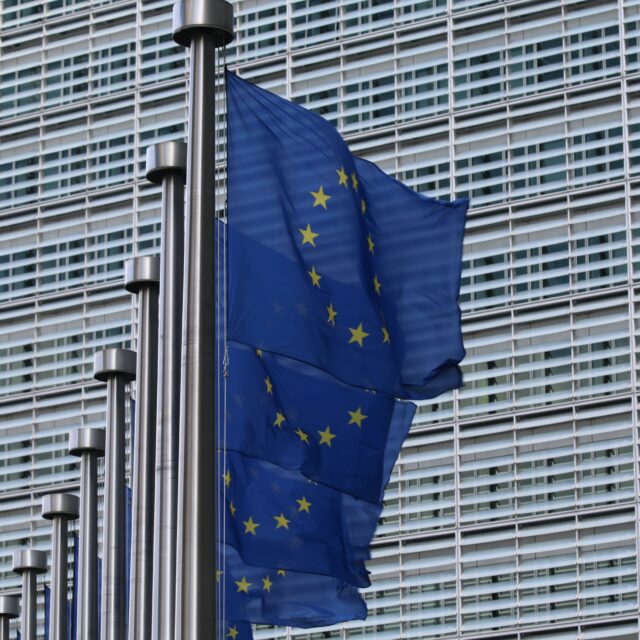By Christian Odendahl and John Springford
The Commission’s proposed recovery fund is macroeconomically meaningful. The ‘frugals’ should focus less on negotiating away the transfers to harder-hit countries, and more on how the money is spent.
The European Commission has turned the €500 billion EU recovery fund proposed by Angela Merkel, the German chancellor, and Emmanuel Macron, the French president, into a €750 billion front-loaded grant and loan programme integrated into the EU budget. This could be a historic step forward for the EU. For the first time, the EU is likely to agree a common fiscal response to a severe economic shock that goes beyond the pre-existing EU budget, which takes no account of the economic cycle; and the response is based on EU-issued debt, rather than immediate payments by member-states. The plan recognises the pain that COVID-19 has imposed on some parts of Europe, especially in the south. But the forthcoming negotiations will be tricky: it is unclear how much spending will be allocated to hard-hit regions and sectors, and how much will benefit increasingly authoritarian governments in Hungary and Poland.
There is a big risk that the gap between northern and southern Europe will widen as a result of the COVID-19 crisis. Further divergence would undermine the single market, bolster anti-EU sentiment in some countries, notably Italy, and make the EU even harder to govern than it is now. Designing the recovery fund to avoid further divergence is the key challenge for the Commission.
Ursula von der Leyen announced the Commission’s proposal on May 27th. The Commission wants sizeable grants for countries that are poorer and hardest hit by COVID-19. These grants would be paid out in the first four years of the next EU budget period, between 2021 and 2024. Under the Commission’s plan, the EU would borrow collectively at very long maturities (with bonds maturing between 2028 and 2058). Member-states’ share of repayments would be determined by their national income per capita a long time in the future.
Frontloaded grants of €500 billion – roughly 3.5 per cent of 2019 EU-27 GDP – are economically significant. Italy would receive around 1 per cent of GDP per year to spend between 2021 and 2024, complementing its own national stimulus. But it would not add to Italy’s public debt, as the repayment would be a collective responsibility. The recovery fund will not turn the EU into a fiscal union, but if member-states agree to the Commission’s proposal, investors will be more confident that the EU will stand together in a severe crisis, both now and in the future.
As we explained in a recent research paper, there are several reasons why COVID-19 will be more damaging to the economies of southern Europe. Italy and Spain were hit first by the pandemic. Other countries saw the severity of the outbreaks in Spain and Italy, and had the chance to lock down more quickly, thereby limiting the outbreak. They will be able to open their economies more rapidly, while it will take several more weeks before France, Italy, Spain and Belgium have reduced infections to a manageable level.
The lockdowns – and continued social distancing measures when they are lifted – are especially bad for the many regions in Greece, Spain, Italy and Portugal that have large tourism or manufacturing sectors. Office workers can work more easily from home, whereas those in factories or leisure sectors must work together or in proximity to customers. Moreover, tourism is far more seasonal in Mediterranean resorts than northern cities, and tourists may stay away during the summer peak.
Southern European countries also have less fiscal room to support businesses and workers, and put together sizeable stimulus packages to aid a recovery. The European Commission is already asking questions about Germany’s vast support programme for its companies – including the recently agreed bailout of the Lufthansa airline – which might undermine the single market.
In the future, the increased debt burden caused by the COVID-19 crisis will hit the south harder, even if the increase in debt is the same across Europe. The reason is that borrowing costs tend to rise as debt piles up. By our calculations, Italy and Spain will have to spend an additional half a percentage point of GDP on debt service if their stock of debt jumps by 20 percentage points, whereas Germany’s debt service costs will not change at all (because Germany starts from a lower base). In addition, the EU’s fiscal rules – which are in urgent need of reform – mandate countries with high debt to cut it to 60 per cent of GDP. Less supportive fiscal policies in southern Europe would sap growth for many years.
The recovery fund, which requires the unanimous agreement of the 27 member-states, is intended to counteract these forces. That is why the Commission wants most of the €500 billion to be transferred to Southern and Central and Eastern Europe. Northern European countries, bar Germany, have already signalled their opposition, and are likely to press for as much money as possible to be recycled back to their own regions and businesses.
To gain their support for a recovery fund that will have a macroeconomic impact, the rules governing how money is spent will be important. The Commission proposes that most of the funding should be for investment projects, based on grants and loans. The money should be spent in line with EU priorities: the digital and green transitions. The EU also hopes to develop its own funding sources from carbon allowances and border taxes on greenhouse gas emissions, a tax on tech giants, and a tax on non-recycled plastics. This approach is reasonable in part, as it focuses on common European goods such as preventing climate change.
But an investment spurt would be risky: projects have long lead times, and public investment is prone to corruption and waste. That is why fiscal stimulus is usually enacted through welfare and tax systems: such measures boost spending quickly. While EU investment funding will give national governments more room to support the economy, keeping the quality of investment high will also be important, especially in Hungary and other member-states where too much EU money flows to people who are close to the government. The Commission is considering making EU funding more contingent on the rule of law, to prevent corruption, and to stop Hungary and Poland slipping further towards autocracy. Rather than obsessing about ‘structural reforms’, such as liberalising labour markets, as a pre-condition for fiscal integration, now is the time to impose stricter rules on what EU money is spent on and who benefits from it. The Council is yet to pass a Commission proposal to make EU funding conditional on upholding the rule of law. Without it, Hungary and Poland would stand to receive sizeable additional transfers that might provide political benefits to increasingly autocratic governments.
With Germany, France, Spain, Italy and the Commission all behind the recovery fund, the EU looks likely to take a much-needed step towards greater fiscal integration. But if the strings attached to the fund are well-designed, the money will do more to improve prosperity and democracy across the EU.
The Authors, Christian Odendahl is chief economist and John Springford is deputy director at the Centre for European Reform




